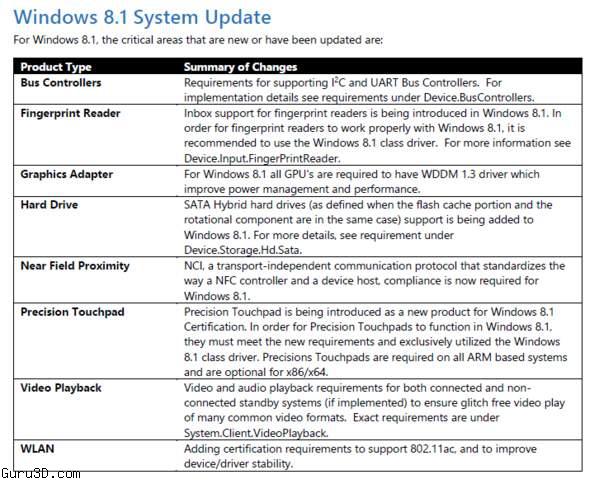Microsoft and Intel execs detailed some of the new hardware requirements for Windows 8 clients that will be introduced in 2014 and 2015 during a session at this week's Microsoft Worldwide Partner Conference (WPC).
As we've been hearing at vaious Microsoft conferences over the past couple months, Microsoft is working closely with OEMs on making sure new touch-enabled, lighter, thinner, faster devices with longer battery life, support for "modern" security, connectivity and new sensors will be coming to market. Starting later this year, these machines will make use of the new features Microsoft is building into Windows 8.1, including support for NFC and biometric authentication; new portrait-mode enhancements; and InstantGo (the renamed and updated Connected Standby capability) to allow devices to turn on instantly and keep apps up-to-date.
(A related aside: "Precision Touchpads" also are now available for Windows 8.1 Certification. Precisions Touchpads are required on all ARM based systems and are optional for x86/x64, according to Microsoft documentation.)
There will be new, additional requirements for Windows devices seeking Microsoft certification coming in the next couple of years, Group Manager Lee Sabow told session attendees.
In January 2014, certified Windows systems will be required to support Bluetooth on all devices with Wi-Fi. Front-facing 720p webcams will be required for systems with integrated displays (tablets, notebooks and all-in-ones). And higher-fidelity audio requirements for speakers and microphones will be on the list, too, Sabow said, to help partners who want to "upsell" Lync, Microsoft's unified communications technology, Sabow said.
In January 2015, TPM 2.0 will be required on all certified Windows devices, Sabow said. TPM, or Trusted Platform Module, is a spec and implementation for a cryptoprocessor. More information on TPM 2.0 is available here.
Yes - existing hardware is supported using the WDDM 1.2 specification; the WDDM 1.1 specification has been deprecated. However, there is still a lot of even EOL hardware that supports WDDM 1.2 - examples of which are the nV GT/GTS/GTX 500 series and AMD Radeon HD5xxx series; note that even this hardware has been EOL for at least two years. (It what makes my micro-upgrade - from AMD HD5450 to nV GTX 550 Ti - all the more hilarious; the WDDM spec didn't change a bit. Even more hilarious is that drivers can support hardware covering multiple WDDM specs - the current WHQL drivers from both AMD and nVidia covers WDDM 1.2 and WDDM 1.3 hardware from each company - the days of specification-specific drivers are officially dead). So, if you install the current WHQL drivers from AMD and Nvidia on Windows 8, you will notice that it doesn't require you to reboot the PC. Install the same driver on Windows 7 and you will need to reboot. That's one of the many differences between WDDM 1.1 and 1.2.

